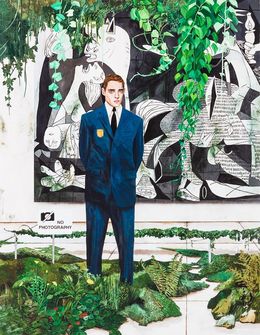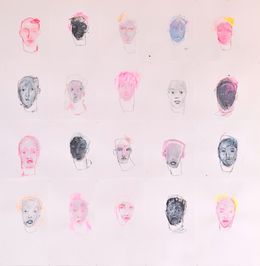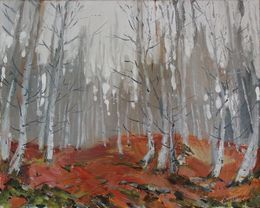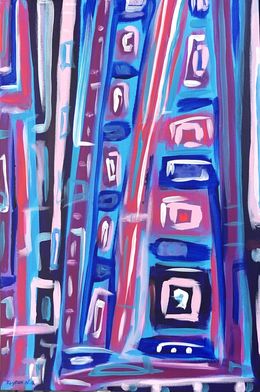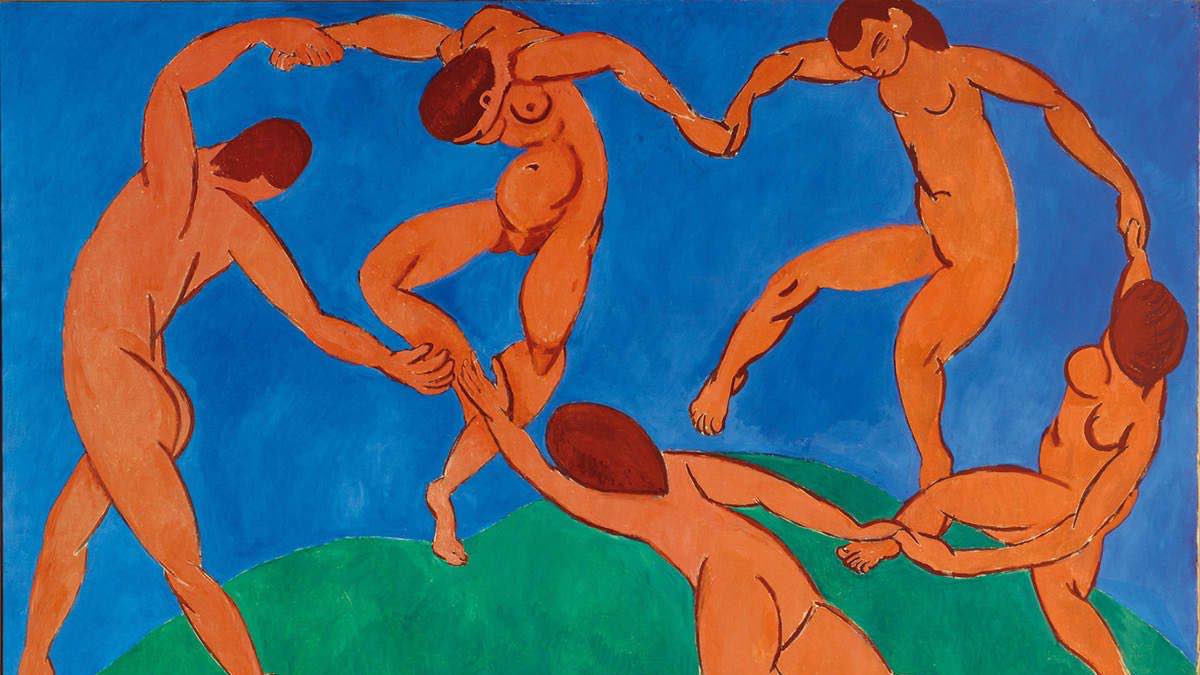
Original Inspirations behind 5 Dance Paintings and Photographs
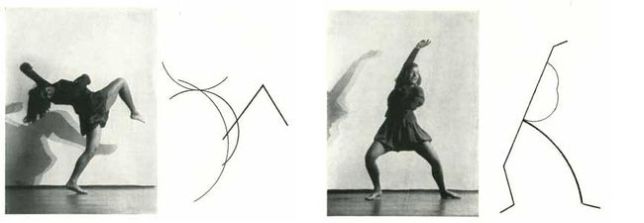
In many ways, dance encapsulates the opposite of what is achieved through mediums like photography or painting. While the fine arts capture a fixed and isolated moment in time, dances are centered around fluctuation and inherent instability. Perhaps this is why we love the convergence of the two art forms, especially within photography and dance paintings. To celebrate the masterpieces that focus on dance, Artsper’s put together five examples from contemporary art, matching them with their original inspirations… So, ready to dive into the art of dance?
1. Henri Matisse, La Danse

La danse is one of the most iconic dance paintings throughout art history. It remains one of the most famous examples of Matisse’s Fauvist period, using only three colors: green, red and blue. Evoking the hues of the mediterranean, this palette spans from the green of the pines to the boundless blue of the sky. Of course, one’s eye immediately gravitates towards the rust-colored swirl of bodies. Spinning in circular motion, the dancers follow the same formation as “la Sardana,” a traditional Catalan dance. The contemporary masterpiece is said to have been inspired by a group of fishermen, dancing this cyclic dance on a beach in Catalonia.

Typically, the choreography consists of interlacing hands, to form an inward facing circle. From here, the dancers will follow a variety of steps in accordance with the tempo. When several circles form, they’ll usually carry out the dance routine at different rhythms and speeds. This is precisely what Matisse captures in La dance: movement, dynamism and circularity.

Many artists have found inspiration in Matisse’s approach to dance, such as Jérôme Mesnager’s with his Parisian street art mural, mimicking the very same Sardana rotation found in the original.
2. Agnès Godard, My Favorite Dance
French cinematographer Agnès Godard brings a unique vision to her photographic practice. Relying on years of experience within the film industry, her approach is both technical and fluid, filled with motion yet stuck in time. For her latest series “My Favorite Dance,” Godard wrote a few lines, selected actors and presented them with Rodin’s drawings and watercolors. The rest was improvisation, intuition.

When looking at these works side by side, Rodin’s influence is easily apparent. The gentle lines and delicate figures mirror one another. And yet, Godard’s approach to photography is also quite self-reflexive, putting the process itself into question. The series achieves its ephemeral, blurred effect through the artist’s penchant for experimentation. Given her cinematic career, reframing and superimposing these photographs was naturally part of her process, culminating to a point where one isn’t sure if these are dance paintings or photographs…

3. JR, New York City Ballet

In 2014, street art collided with the New York City Ballet. Through his staple combination of photography and collage, JR created an installation for the famed Lincoln Center. Working with the dancers of the New York City Ballet, his objective was to form a large-scale eye, made entirely of paper and of the dancers themselves. Once these images were finalized, they were installed across the floor of Lincoln Center’s atrium.

Covering the entirety of the floor, JR intended for this piece to take on monumental proportions. The scale of the project was intended to get the public to leave their designated seats and move upwards, towards the “cheaper” seats. As with most of his art, JR set out to challenge norms by deconstructing the typical hierarchy of ballet audiences. His collaboration with the New York City Ballet pushed audience members to leave their position, their perspective and explore a more democratic way of experiencing dance.
4. Kandinsky, Graphical scheme of the jump
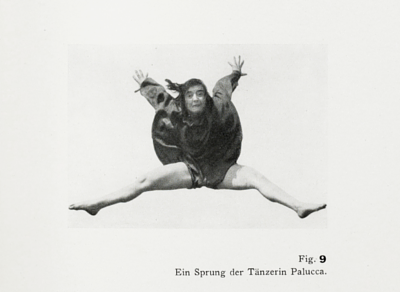
Rather than rely on photography or brushstrokes, Vassily Kandinsky captured dance through bare and minimalistic sketches. With Graphical scheme of the jump, he translates complex movement through a simplistic linear form, giving his work a technical dimension. Focusing on the aesthetics of dance, he studied Gret Palucca, a German expressionist dancer and favorite among artists of the Bauhaus movement. Palucca’s particular dynamism captivated Kandinsky, who traced her method of movement through his “analytical drawings.”

The Palucca-inspired sketches are originally based on photographs by Charlotte Rudolph, capturing the dancer mid-flight. Her unique dance style was thought to coincide perfectly with the Bauhaus aesthetic and its approach to form. In typical geometric fashion, Kandinsky decomposes the figure to a set of lines, reducing Palucca’s exuberance to its very essence. One need only look at the dancer’s energetic fingertips, merely represented as five potent dots…
5. Alex Katz, Red Dancers
Known for his stylized portraits, the American artist has continually been inspired by movement, creating many dance paintings throughout his career. Alex Katz’s collaboration with the modern dancer and choreographer Paul Taylor played a vital role. From costume to set design, Katz grew involved in much more than simply painting the dancers. Throughout their collaboration, the two artists learnt from one another, appreciating the convergence of their two distinct genres.

With his “Red Dancers” series from 2018, Alex Katz explores the subject once more, looking at fragmentation and gesture this time around. Through his method of cropping, the artist achieves a rather stark effect, typically encountered across the modern media landscape. Freezing these figures in time and isolating them across several canvases is meant to reflect the fragmentation of TV and technology. More specifically, it speaks to how images of the body are projected and perhaps distorted through different mediums.

Although the series was created in 2018, this form of commentary resonates extremely well with the recent success of TikTok, an application that celebrates short, fractured dance routines.
When Dancers Turn to Art
There is, of course, the rare exception of when dancers themselves gravitate to other mediums, expressing the messages and movement otherwise conveyed by the body. A perfect example of this can be found in the works of Enfant Précoce, a French artist carrying out his interdisciplinary approach across a variety of art forms.
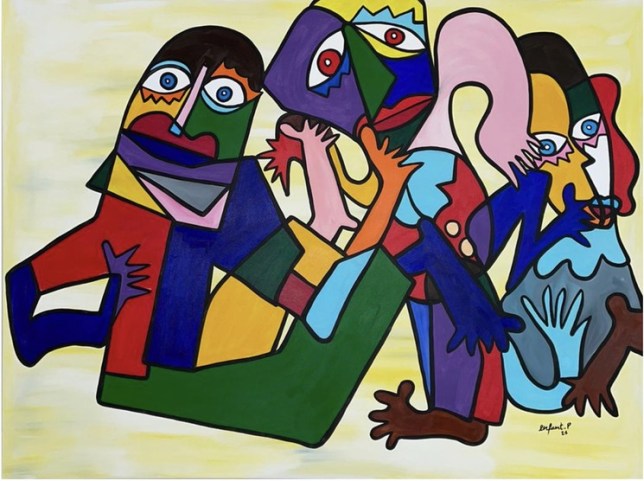
The painter and dancer hasn’t necessarily had to seperate the two, exploring his first love, movement, with each brushstroke. Through color and his self-proclaimed childlike style, Enfant Précoce joins everything together: dance, painting, fashion…

His influences are manifested in his collaborations, with the “La Marche Bleue” dance company, for example, and its partner clothing brand “Walk in Paris.”
Dance, Dance, Dance
Movement is at the center of it all. For Enfant Précoce, it contributes to the narrative and fantasy of his universe, operating as an unending invitation to explore the child within. Among photographers, dance can come to challenge the most technical aspects of the process, pushing them to capture motion with the fixity of a frame.
If your passion for dance paintings is still burning, head over to Artsper’s brief history of dance in art, from Degas to contemporary expressions…

About Artsper
Founded in 2013, Artsper is an online marketplace for contemporary art. Partnering with 1,800 professional art galleries around the world, it makes discovering and acquiring art accessible to all.
Learn more



